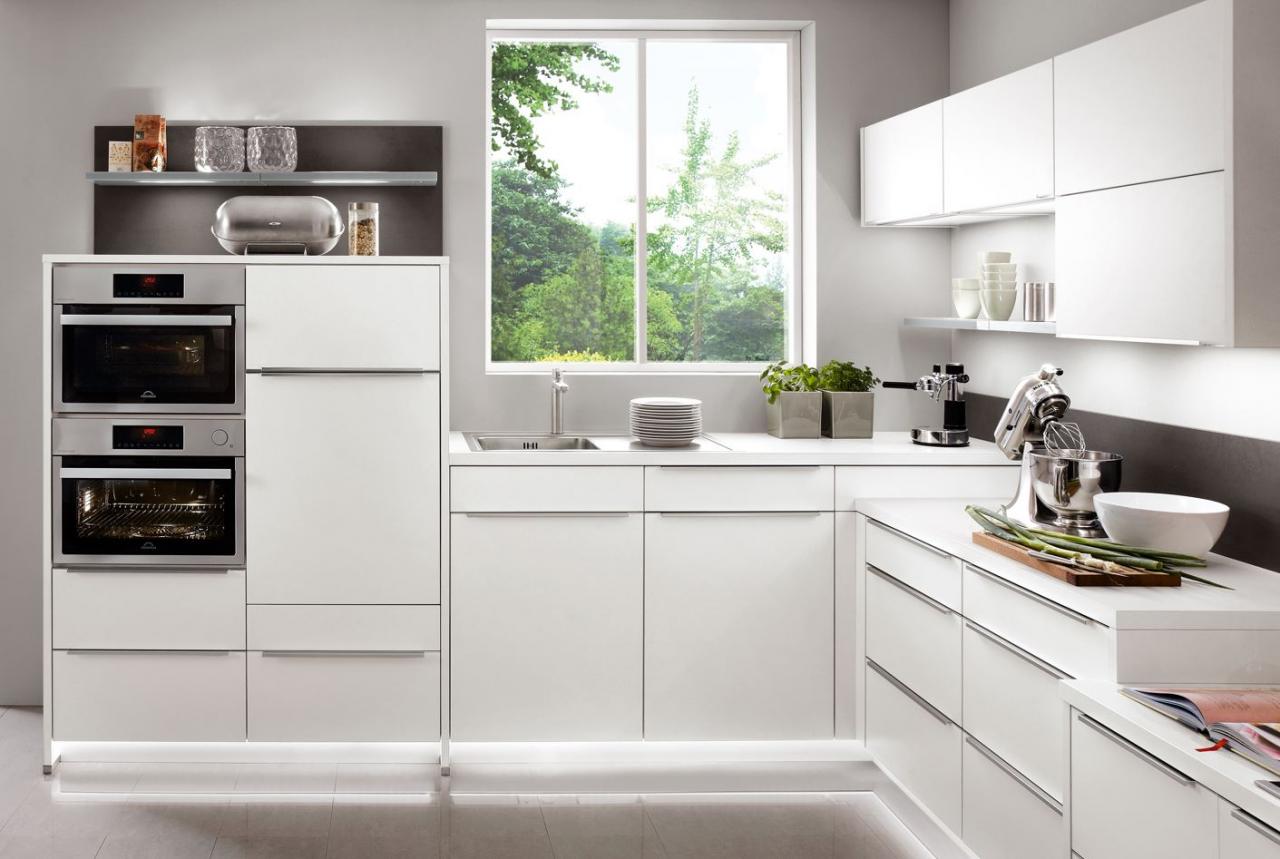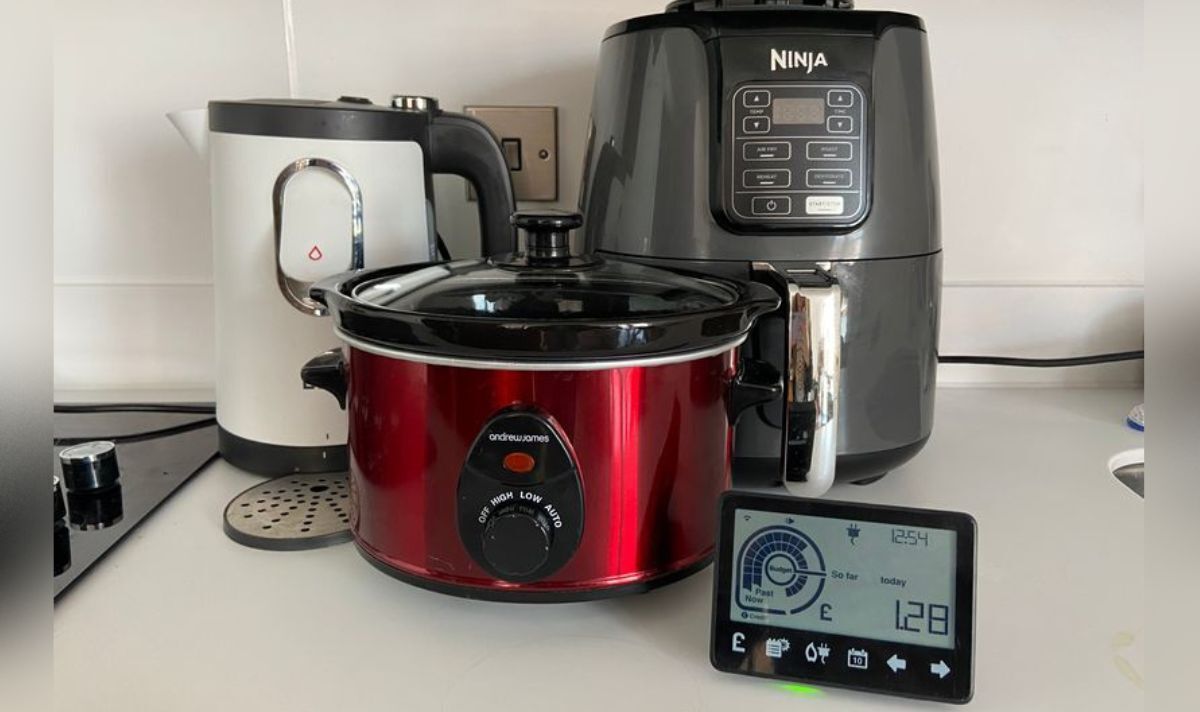Energy efficient kitchen appliances for German homes are more than just a trend; they’re a reflection of evolving consumer priorities and stringent environmental regulations. Germany, a leader in green technology, is seeing a significant shift towards energy-conscious kitchen choices, driven by government incentives, rising energy costs, and a growing awareness of the environmental impact of household appliances. This exploration delves into the popular appliances, influencing factors, technological advancements, and the long-term benefits – both financial and ecological – of embracing energy efficiency in the German kitchen.
From understanding Germany’s unique energy efficiency ratings and comparing them to other European standards, to examining the market share of leading brands and the innovative technologies driving the sector, we’ll uncover the key elements shaping the future of energy-efficient kitchens in Germany. We’ll also explore consumer attitudes and the role of marketing in promoting sustainable appliance choices, ultimately painting a picture of how German homes are becoming increasingly eco-friendly, one kitchen appliance at a time.
Energy Efficiency Standards in German Homes
Germany has implemented stringent regulations to promote energy efficiency in household appliances, including those used in kitchens. These regulations aim to reduce energy consumption, lower greenhouse gas emissions, and ultimately contribute to a more sustainable future. The impact of these policies is significant, shaping both consumer choices and the manufacturing practices of appliance producers.The current energy efficiency regulations impacting kitchen appliances in Germany primarily revolve around the EU’s Energy Label system.
This system, while applicable across the EU, is implemented and enforced at the national level, with Germany actively participating in its development and refinement. The label categorizes appliances based on their energy consumption, using a scale from A (most efficient) to G (least efficient), with the addition of A+, A++, and even A+++ ratings in the past for particularly efficient models.
Manufacturers must adhere to specific energy consumption limits to obtain these ratings, and these limits are regularly updated to reflect technological advancements and increasing efficiency standards. This ensures that appliances available on the German market consistently meet a high level of energy efficiency.
German Energy Efficiency Ratings Compared to Other European Countries
While the EU Energy Label provides a standardized system across member states, subtle differences in enforcement and consumer awareness can lead to variations in the market penetration of highly efficient appliances. Germany, alongside other leading European countries like France and the Netherlands, generally shows a higher adoption rate of energy-efficient appliances compared to some Southern or Eastern European countries.
This difference may be attributed to factors like higher energy prices in Germany, stronger consumer awareness of environmental issues, and more robust government incentives. However, the core rating system remains consistent across the EU, allowing for fair comparison between appliances purchased in different countries. Variations might arise from the specific models available in each market, as manufacturers tailor their product offerings to regional demands and regulations.
Impact of Government Incentives on Energy-Efficient Appliance Adoption
The German government actively encourages the adoption of energy-efficient kitchen appliances through various financial incentives. These include tax rebates, subsidies for purchasing energy-efficient models, and participation in government-sponsored programs that offer discounts or financing options. For example, the Bundesamt für Wirtschaft und Ausfuhrkontrolle (BAFA), the Federal Office for Economics and Export Control, often runs programs providing financial support for homeowners undertaking energy-efficient renovations, which frequently include the replacement of older kitchen appliances with newer, more efficient models.
These incentives significantly influence consumer purchasing decisions, driving demand for higher-rated appliances and accelerating the overall market shift towards greater energy efficiency. The success of these incentives is evident in the increasing prevalence of high-energy efficiency rated appliances in German homes. The effectiveness is further amplified by public awareness campaigns educating consumers about the long-term cost savings and environmental benefits associated with these appliances.
Popular Energy-Efficient Kitchen Appliances in Germany: Energy Efficient Kitchen Appliances For German Homes

Source: webflow.com
Germany, a nation known for its engineering prowess and commitment to sustainability, boasts a thriving market for energy-efficient kitchen appliances. Consumers are increasingly aware of the environmental and financial benefits of choosing appliances with high energy ratings, driving demand for models that minimize energy consumption. This focus on efficiency is reflected in the popularity of certain brands and appliance types.
Popular Energy-Efficient Appliance Models in Germany
The German market offers a wide variety of energy-efficient kitchen appliances. The following table highlights five popular choices, their energy ratings (using the EU energy label scale A+++ to G, where A+++ is the most efficient), and key features that contribute to their energy savings. Note that specific models and energy ratings can change over time, so it’s always best to check the latest information before purchasing.
| Appliance Type | Brand | Energy Efficiency Rating | Key Features |
|---|---|---|---|
| Refrigerator | Bosch | A+++ | SuperFreezing function, intelligent cooling management, LED lighting, inverter compressor |
| Dishwasher | Miele | A+++ | AutoDos detergent dispensing, QuickPowerWash cycle, sensor-controlled water usage, heat recovery system |
| Washing Machine | Siemens | A+++ | iSensoric technology, speedPerfect, varioPerfect, EcoSilence Drive motor |
| Oven | AEG | A+ | Pyrolytic self-cleaning function, fan-assisted cooking, precise temperature control |
| Induction Cooktop | Bosch | A | Precise power control, quick heating, residual heat indicator, automatic pan recognition |
Market Share of Energy-Efficient Appliance Brands in Germany
The German market for energy-efficient kitchen appliances is highly competitive, with several major brands vying for market share. Bosch, Siemens, Miele, and AEG consistently rank among the top brands, benefiting from strong brand recognition, a reputation for quality, and a wide range of energy-efficient models. While precise market share data fluctuates and isn’t publicly released in its entirety by all companies, these brands consistently hold significant portions of the market, indicating consumer preference for their energy-efficient offerings and technological advancements.
Smaller brands and specialist retailers also contribute to the overall market, offering niche products and competitive pricing. The market is characterized by a strong emphasis on innovation and continuous improvement in energy efficiency, leading to a dynamic and evolving landscape.
Factors Influencing Appliance Choice
Choosing energy-efficient kitchen appliances is a significant decision for German households, influenced by a complex interplay of factors beyond just the energy label. Consumers carefully weigh various aspects before making a purchase, reflecting both practical considerations and personal preferences.Price, brand reputation, and available features are three key factors shaping consumer choices in the German market for energy-efficient kitchen appliances.
These elements interact in various ways, sometimes reinforcing each other, sometimes creating trade-offs. Understanding these dynamics provides valuable insight into consumer behavior.
The Role of Price
Price is a fundamental factor in any purchasing decision, and energy-efficient appliances are no exception. While consumers are increasingly aware of the long-term cost savings associated with energy efficiency, the initial investment can still be a significant barrier. Many German consumers, especially those on tighter budgets, may prioritize affordability over the highest energy efficiency rating, opting for a slightly less efficient model if it significantly reduces the upfront cost.
This is particularly true for larger appliances like refrigerators or ovens, where the price difference between energy classes can be substantial. Government subsidies and financing options can help mitigate this barrier, encouraging the adoption of more energy-efficient models. For example, the KfW (Kreditanstalt für Wiederaufbau) offers various programs to support energy-efficient renovations, including the purchase of appliances.
The Influence of Brand Reputation
Brand reputation plays a crucial role in shaping consumer trust and influencing purchasing decisions. German consumers often exhibit strong brand loyalty, favoring established brands known for their quality, reliability, and after-sales service. This preference can sometimes outweigh the price difference or even a slightly lower energy efficiency rating. Consumers may be willing to pay a premium for a well-established brand they trust, believing that it represents a safer and more dependable investment in the long run.
This is particularly relevant in a market where many appliances have long lifespans, meaning a reliable brand translates to fewer repairs and replacements over time.
The Importance of Available Features
Beyond energy efficiency and price, the range of available features significantly impacts consumer choices. Modern kitchen appliances offer a wide array of functionalities, from smart connectivity and precise temperature control to self-cleaning cycles and advanced cooking modes. These features cater to various lifestyles and cooking preferences, influencing the perceived value and desirability of a particular appliance. Consumers might prioritize specific features, such as a built-in coffee maker or a steam oven, even if it means compromising slightly on the energy efficiency rating or paying a higher price.
The increasing availability of smart home integration further complicates the decision-making process, as consumers balance the desire for technological advancements with energy consumption concerns.
Consumer Awareness of Energy Efficiency
The level of consumer awareness regarding energy efficiency significantly impacts buying habits. While awareness is generally high in Germany, due in part to government initiatives and public education campaigns, the understanding of different energy efficiency labels and their implications varies. Consumers who are more informed about the long-term cost savings associated with energy-efficient appliances are more likely to prioritize this factor in their purchasing decisions.
Marketing strategies that effectively communicate the benefits of energy efficiency, such as displaying total cost of ownership calculations, can further influence consumer behavior. Increased access to reliable information, such as online comparison tools and independent reviews, empowers consumers to make informed choices that align with their budget and environmental concerns.
Technological Advancements in Energy Efficiency

Source: co.uk
The quest for energy-efficient kitchen appliances has spurred significant technological innovation, leading to appliances that consume considerably less energy than their predecessors. These advancements not only reduce household energy bills but also contribute to a smaller carbon footprint. The difference in energy consumption can be substantial, often resulting in savings of 30% or more compared to older models.
This section details three key technological advancements driving this progress.
Inverter Motor Technology
Inverter motor technology represents a significant leap forward in appliance efficiency. Traditional appliances often use a simple on/off motor, cycling between full power and off, leading to energy waste and fluctuating performance. In contrast, inverter motors use variable frequency drives to precisely control the motor’s speed and power. This allows the appliance to operate at the optimal power level for the task, minimizing energy consumption.
For example, a refrigerator equipped with an inverter motor can maintain a consistent temperature with minimal energy fluctuations, unlike older models that would cycle frequently between high and low power. This results in significantly lower energy consumption over the appliance’s lifespan, often reducing energy usage by 20-40% compared to traditional models. The mechanism involves constantly monitoring the temperature and adjusting the motor speed accordingly, ensuring consistent performance while minimizing energy waste.
Improved Insulation and Sealing
Effective insulation and airtight sealing are crucial for reducing energy loss in appliances like refrigerators and freezers. Modern appliances utilize advanced insulation materials, such as vacuum insulation panels (VIPs) or high-density polyurethane foam, to minimize heat transfer. These materials offer significantly better insulation properties than older materials, resulting in reduced energy needed to maintain the desired temperature. Simultaneously, improved sealing techniques, often employing specialized gaskets and door designs, prevent cold air from escaping and warm air from entering.
Consider a refrigerator with improved insulation and sealing compared to a similar older model. The newer model may require only 50% of the energy to maintain the same temperature, demonstrating the significant impact of these improvements. The mechanism relies on creating a thermal barrier that restricts the flow of heat, preventing energy loss and reducing the workload of the cooling system.
Smart Controls and Energy Monitoring
Smart controls and energy monitoring features further enhance the energy efficiency of modern kitchen appliances. These features often involve sophisticated sensors, microprocessors, and software that optimize appliance performance based on usage patterns and external factors. For instance, a smart refrigerator can learn your consumption habits and adjust cooling accordingly, reducing energy waste during periods of low usage. Similarly, smart ovens can preheat more efficiently based on the recipe and the desired cooking temperature.
Energy monitoring features provide real-time feedback on energy consumption, allowing users to track their appliance’s energy usage and identify potential areas for improvement. For example, a smart oven might display the energy consumed during each cooking cycle, empowering users to make informed decisions about their cooking methods and appliance usage. The mechanism involves advanced algorithms that analyze data from various sensors and adjust the appliance’s operation to optimize energy efficiency while maintaining performance.
Long-Term Cost Savings and Environmental Impact
Switching to energy-efficient kitchen appliances offers significant long-term benefits, both for your wallet and the environment. While the initial purchase price might be slightly higher, the cumulative savings on energy bills over the appliance’s lifespan far outweigh this difference. Furthermore, reducing energy consumption contributes to a smaller carbon footprint, helping combat climate change.The financial and environmental advantages are intertwined.
Lower energy consumption translates directly into lower electricity bills, providing substantial savings year after year. Simultaneously, this reduced energy demand lessens the strain on power generation, leading to lower greenhouse gas emissions. This section will detail these advantages with concrete examples.
Financial Savings from Energy-Efficient Appliances
Let’s consider a scenario comparing an older, less efficient refrigerator to a modern, energy-efficient model. Assume the older refrigerator consumes 300 kWh per year, while the new model consumes only 150 kWh per year. With an average electricity price of €0.30 per kWh in Germany, the annual savings would be: (300 kWh – 150 kWh)€0.30/kWh = €45. Over a 10-year lifespan, this translates to a total saving of €450.
This is a conservative estimate; savings could be significantly higher depending on the appliances and electricity prices. Further savings can be realized by replacing other energy-intensive appliances, such as dishwashers and ovens, with energy-efficient alternatives. The initial investment is quickly recouped through these long-term savings.
Environmental Impact Reduction
Choosing energy-efficient appliances directly contributes to a smaller carbon footprint. Reduced energy consumption means less demand on power plants, resulting in lower greenhouse gas emissions. Using the same refrigerator example, the annual reduction in energy consumption of 150 kWh translates to a reduction in CO2 emissions. Assuming an average CO2 emission factor of 0.5 kg CO2 per kWh for German electricity generation, the annual reduction would be 150 kWh0.5 kg CO2/kWh = 75 kg CO2.
Over 10 years, this amounts to a reduction of 750 kg CO2. This demonstrates a tangible contribution to environmental sustainability. The cumulative effect of many households making this switch would significantly reduce overall emissions.
Summary of Cost Savings and Environmental Impact, Energy efficient kitchen appliances for German homes
- Financial Savings: Replacing a 300 kWh/year refrigerator with a 150 kWh/year model saves €45 annually and €450 over 10 years at €0.30/kWh.
- Environmental Benefits: The same refrigerator replacement reduces CO2 emissions by 75 kg annually and 750 kg over 10 years, assuming a 0.5 kg CO2/kWh emission factor.
- Wider Impact: These savings and reductions are amplified when multiple energy-efficient appliances are used across the home.
Consumer Perception and Attitudes
German consumers are increasingly aware of environmental issues and the long-term costs associated with energy consumption. This growing awareness is reflected in a rising demand for energy-efficient appliances, particularly in the kitchen, where significant energy is used. However, the adoption rate of these appliances isn’t uniform across all consumer segments, influenced by factors like price sensitivity, perceived value, and trust in technological advancements.While many German consumers recognize the environmental benefits of energy-efficient appliances, the initial higher purchase price remains a significant barrier for some.
This price sensitivity is often balanced against the long-term cost savings offered by reduced energy bills, but the upfront investment can still be a deterrent, especially for those on tighter budgets. Marketing and advertising campaigns play a crucial role in bridging this gap.
The Influence of Marketing and Advertising on Consumer Attitudes
Effective marketing campaigns must clearly communicate the total cost of ownership, highlighting not only the initial purchase price but also the long-term savings on electricity bills. Visual representations, such as comparative charts showing the cost difference over several years between energy-efficient and less efficient models, can be highly persuasive. Testimonials from satisfied customers and endorsements from trusted consumer organizations further build confidence and trust.
Focusing on the environmental benefits, such as reduced carbon footprint, appeals to the growing number of environmentally conscious consumers in Germany. For example, a campaign could showcase a family saving both money and the planet by using an energy-efficient refrigerator. A visually appealing advertisement might depict a family enjoying a meal prepared with energy saved, highlighting the connection between appliance efficiency and lifestyle.
Effective Communication Strategies for Energy-Efficient Appliances
To effectively communicate the benefits of energy-efficient kitchen appliances, manufacturers and retailers should adopt a multi-pronged approach. This includes:
- Clear and concise labeling: Energy labels should be prominent and easy to understand, clearly displaying the energy efficiency rating and estimated annual energy consumption. Using simple, visual representations of energy savings, rather than just technical specifications, can improve comprehension.
- Targeted advertising campaigns: Advertising should be tailored to different consumer segments, addressing their specific concerns and priorities. For example, highlighting long-term cost savings for budget-conscious consumers, and emphasizing environmental benefits for eco-conscious individuals.
- Educational initiatives: Collaborating with consumer organizations and government agencies to provide educational materials and workshops on energy efficiency can help demystify the technology and build consumer confidence.
- Online resources and tools: Providing easy-to-access online resources, such as energy consumption calculators and comparative product information, allows consumers to make informed decisions based on their individual needs and usage patterns.
Future Trends in Energy-Efficient Appliances
The German kitchen appliance market is undergoing a significant transformation, driven by increasing environmental awareness and stricter energy efficiency regulations. Consumers are becoming more discerning, demanding appliances that not only perform well but also minimize their environmental footprint and long-term running costs. This shift is shaping the development and adoption of innovative technologies aimed at maximizing energy savings.Technological advancements are rapidly changing the landscape of energy-efficient kitchen appliances.
In the next five years, we can expect to see even greater integration of smart features, improved insulation materials, and more sophisticated energy management systems. These advancements will likely lead to a substantial reduction in energy consumption, contributing to both individual household savings and a broader reduction in Germany’s carbon footprint. For example, the widespread adoption of heat pump technology in refrigerators and dishwashers is projected to significantly lower energy usage compared to traditional compressor-based models.
Smart Appliance Integration and Energy Management
Smart appliances are increasingly common, but future iterations will go beyond simple app control. Expect to see more sophisticated energy management systems integrated directly into appliances, allowing them to learn usage patterns and optimize energy consumption accordingly. For instance, a smart refrigerator might adjust its cooling based on the amount of food inside and external temperature, while a smart dishwasher could automatically select the most energy-efficient wash cycle based on the level of soiling.
This proactive energy management will go beyond simple timers and offer real-time adjustments based on grid demand and renewable energy availability, further reducing reliance on fossil fuels.
Advanced Insulation and Material Science
Improvements in insulation materials and appliance design will play a critical role in boosting energy efficiency. Manufacturers are exploring the use of vacuum insulation panels (VIPs) and advanced aerogels, which offer significantly better thermal performance than traditional insulation. This will lead to appliances that retain heat or cold more effectively, reducing the energy required to maintain optimal operating temperatures.
Imagine refrigerators with significantly thinner walls yet superior insulation, resulting in smaller footprints and lower energy consumption. Similarly, ovens might utilize more efficient heat distribution systems, minimizing energy loss during the cooking process.
Heat Pump Technology Expansion
The adoption of heat pump technology is expected to accelerate across various appliance categories. While currently prevalent in refrigerators and heat pump dryers, its expansion into other areas like dishwashers and ovens is highly probable. Heat pumps offer a significantly more efficient way to heat and cool compared to traditional resistive heating elements. This shift would lead to a dramatic reduction in electricity consumption, making appliances significantly more environmentally friendly.
For example, a heat pump dishwasher could use significantly less energy than a conventional electric model, reducing both running costs and the appliance’s carbon footprint.
Hypothetical Future Kitchen Scenario
Imagine a German kitchen in 2028. The refrigerator, equipped with advanced sensors and AI-powered energy management, automatically adjusts its cooling based on food quantity and external temperature, minimizing energy waste. The induction cooktop seamlessly integrates with the smart home system, allowing for precise temperature control and optimized energy usage. The dishwasher, powered by a heat pump, quietly and efficiently cleans dishes using minimal water and energy.
Even the oven utilizes advanced heat distribution and insulation, ensuring minimal energy loss during cooking. All appliances communicate with each other and the home energy management system, optimizing energy consumption based on real-time grid conditions and renewable energy availability. This interconnected, energy-conscious kitchen represents a significant leap towards sustainable living, demonstrating the potential of future technological advancements.
Last Word
Ultimately, the transition to energy-efficient kitchen appliances in German homes represents a significant step towards a more sustainable future. The combination of government support, technological innovation, and a growing consumer awareness of both cost savings and environmental benefits is creating a powerful impetus for change. While price and brand reputation remain important considerations, the long-term advantages of energy efficiency are becoming increasingly clear, promising a future where German kitchens are both efficient and environmentally responsible.
Common Queries
What are the typical energy efficiency ratings for kitchen appliances in Germany?
German appliances use an A+++ to G scale, with A+++ being the most energy-efficient. However, the scale is being revised, so pay close attention to the specific energy consumption values provided.
How much can I save on my energy bill by switching to energy-efficient appliances?
Savings vary greatly depending on the appliance and usage, but you could see reductions of 20-50% or more on your annual energy costs compared to older, less efficient models. Look for specific energy consumption data for accurate estimations.
Are there government rebates or incentives for buying energy-efficient appliances in Germany?
Yes, Germany often offers various subsidies and tax incentives for energy-efficient appliances. Check with the relevant federal and regional authorities for the latest programs.
How long does it take for an energy-efficient appliance to pay for itself through energy savings?
The payback period depends on the appliance’s cost, energy savings, and usage. It can range from a few years to over a decade, but the longer lifespan of many energy-efficient models often makes them a worthwhile investment.
Where can I find reliable information on the energy efficiency of specific appliance models?
Check the energy label on the appliance itself, or look for independent reviews and comparison websites that provide detailed energy consumption data.



